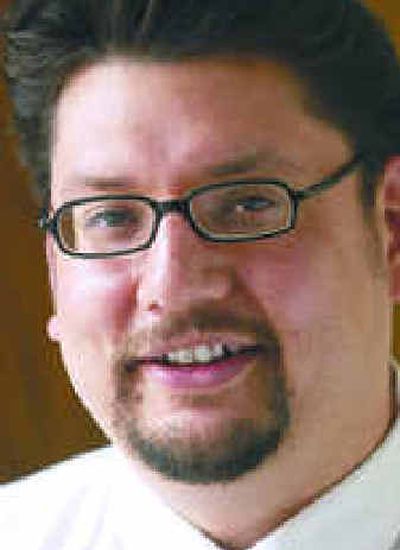History forges the link between golf and Indians

Once when I was being interviewed by a high school journalism student in Bremerton, Wash., the green reporter couldn’t stop laughing when it came up that I really enjoyed the Indian golf tournaments in the Spokane region. It was as if she were picturing loin-cloth-clad warriors with war paint and spears trying to hit a ball out of a sand trap.
For many, golf conjures up images of aristocratic society with snobby country clubs, servants and cranky old men. That’s partly why Tiger Woods’ success in this sport has been so notable in the mainstream.
Some golf worlds are more diverse, like the scene in Spokane.
Next weekend – always on the first weekend of June – one of the largest regional American Indian tournaments returns to Indian Canyon Golf Course.
Indians and golf, let alone Indians at Indian Canyon, sounds like a joke to some, I suppose.
Last year, 165 men and women showed up from reservations including the Umatilla, Yakama, Colville, Nez Perce, Spokane, Coeur d’Alene and Kalispel. There was even a Tlinket from Alaska and a few from my tribe, the Confederated Tribes of the Salish Kootenai in Montana.
“It’s definitely gotten a little bigger,” said Matt Lindeblad, an apprentice pro at Indian Canyon.
“It’s a fun tournament,” he said. “We like having them up here. Everyone’s usually in a pretty good mood.”
Lindeblad said most everyone at Indian Canyon is accustomed to the rare sight of that many tribal folks on a golf course.
Newcomers may do a double take at the Pendleton-made golf club head covers, beaded caps, and squads of brown men in golf carts. There are times when I’ve sat in a cart among 100 people who are brown like me and wondered how this sight must blow most people’s minds.
When I try to explain the scene, most references don’t make sense to those who don’t know the region’s history.
Years ago in the Indian wars, tribal historians say the Nez Perce scouted for and helped U.S. Calvary troops in their wars against the Spokane and Coeur d’Alene. It’s not uncommon to hear a zinger directed at “those Nez Perce turncoats.”
You must know the history to get the joke.
The classic Indian teasing isn’t captured in any textbook I’ve found. The diversity of the people at the tournament doesn’t show up in books either. Office administrators mingle with politicians, health officials ride with forestry workers. Some operate heavy equipment or work construction. Some are fighting to change federal policy on water rights.
Bruce Wynne, former chairman of the Spokane Tribe, died last fall. During my first tournament after returning to the region five years ago, I was put into his group.
So picture a newspaper reporter paired with a tribal leader, which means being in each other’s company for six hours. I can’t imagine any official relishing that thought.
Wynne knew my dad, he knew this paper, he listened when he asked what my life was like. And he mentored.
“You got to be tough as hell sometimes,” Wynne said as he got out to smack a ball another 200 yards down the fairway.
Another time I was paired with a Yakama administrator whose friend would giggle at his every botched shot.
“Where is this golf etiquette I keep hearing about? Ay!” said the administrator.
One year I was paired with an Indian doctor who gently reminded me it’s important to work off excess blood sugars through simple exercise. As American Indians, we’re all dealing with a family history of diabetes.
That was at Hangman Valley Golf Course, a name that came from the hanging of Indian leaders toward the end of the wars. The Creek at Qualchan Golf Course was named for the Yakama Chief Qualchan, who Col. George Wright hanged in 1858. Wright discovered later that Qualchan wasn’t guilty of the attack for which he’d been blamed.
The Coeur d’Alene Indian Tribe received some national attention for their Circling Raven Golf Course, named after their spiritual leader, who predicted the coming of the Blackrobes.
I don’t know if the thousands of golfers who come to Spokane to play the great local courses know the history of the land they walk. History is what makes us who we are today.